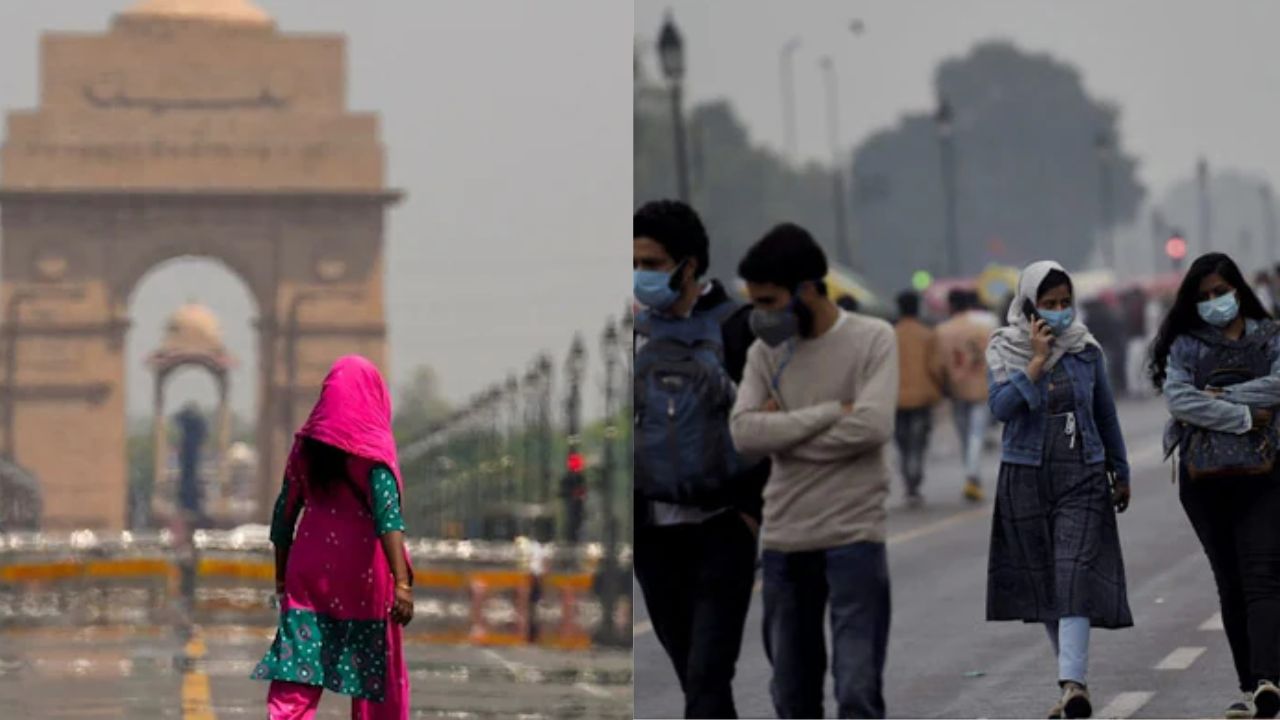 English
English

Is Delhi’s morning haze a sign of winter’s arrival or a toxic blanket of pollution? As temperatures drop and visibility dips, the capital once again faces the alarming reality of unbreathable air.

Daytime temperature expected to reach 30°C.
New Delhi: Delhi began its Wednesday under a blanket of haze with visibility moderately low and sunlight filtering through a smoky layer. The morning temperature hovered around 19 degrees Celsius, matching the RealFeel index. The maximum temperature is likely to touch 30 degrees during the day while the night may turn cooler at around 17 degrees. Despite the mild chill, the pleasant weather is overshadowed by dangerously high pollution levels.
Given the mild yet polluted conditions, residents are advised to dress in light cotton layers for daytime comfort and add a thin jacket for the evening cool. Full-sleeve clothing can help shield against dust and particulate matter. Those venturing outdoors should consider wearing an N95 or similar pollution mask to reduce exposure to harmful air. Avoid synthetic fabrics, which may trap heat and discomfort in hazy conditions.
While the visuals might remind Delhiites of early winter fog, weather experts confirm that the haziness is largely due to pollution rather than natural condensation. The low wind speed of around 6 km/h from the south and minor gusts up to 11 km/h have failed to disperse the pollutants accumulating in the lower atmosphere. The combination of crop residue burning in nearby states and local vehicular emissions has turned Delhi’s air “very unhealthy,” creating a toxic haze that limits visibility and irritates the eyes and throat.
Which City Tops India’s Air Pollution List? Delhi Ranks Sixth
With the air quality reaching hazardous levels, Delhi residents are urged to take preventive measures. Minimize outdoor exercise, especially during morning and evening hours when pollution is at its peak. Use air purifiers indoors and keep windows closed to avoid pollutants entering the house. Drinking plenty of water and using saline nasal sprays may help clear nasal passages. Parents should ensure that children and elderly members avoid unnecessary exposure, as they are most vulnerable to respiratory distress.
Similar weather and air quality patterns are being observed across the northern plains. Parts of Uttar Pradesh, including Noida, Ghaziabad, and Meerut, reported hazy mornings with poor visibility. Haryana’s Gurugram and Faridabad also recorded “very unhealthy” air. In Punjab, the continuing stubble burning has intensified the smog, while Chandigarh and Ludhiana saw reduced sunlight through the haze. Western Uttar Pradesh and northern Rajasthan remain under moderate to poor air quality. Collectively, the entire NCR belt is experiencing a suffocating start to November, with pollution overshadowing the otherwise pleasant seasonal transition.
Supreme Court warns officials on Delhi pollution; ‘Don’t wait for situation to worsen’
Meteorologists predict that the air quality may remain severe for the next few days unless wind speeds increase or rainfall helps in settling the dust and pollutants. As the capital drifts deeper into post-monsoon transition, residents must brace themselves for longer spells of toxic air. Until then, personal precautions and community awareness remain the strongest defense against Delhi’s recurring pollution menace.